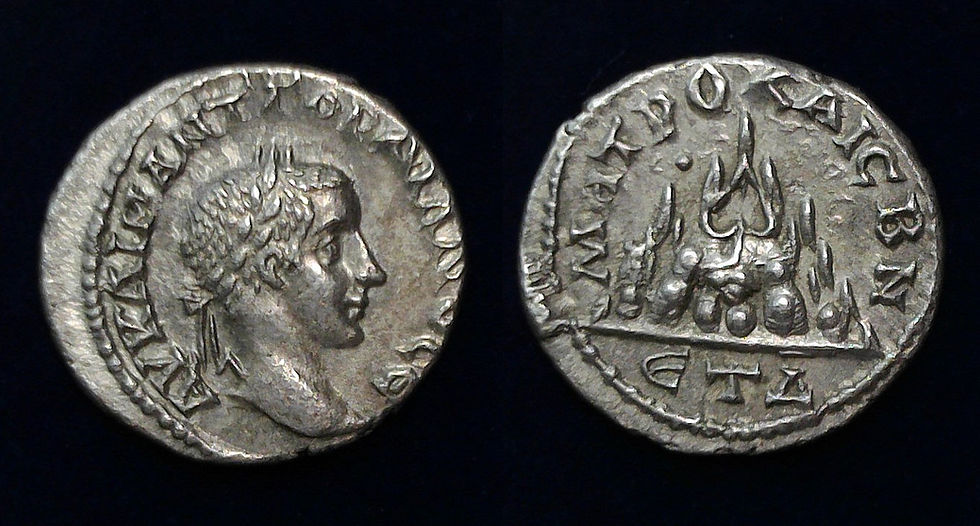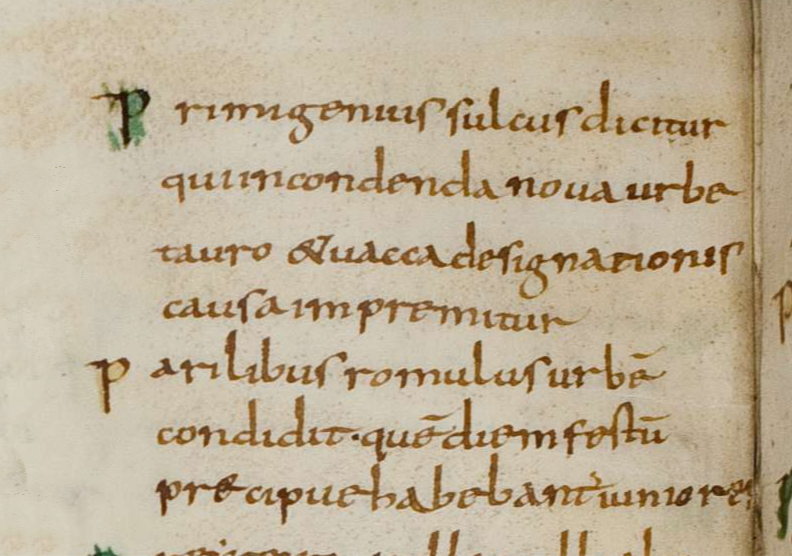Mt. Argaeus, Gordian III, and Shapur I
- sulla80

- Sep 7, 2020
- 3 min read
Updated: Oct 8, 2023
In the words of Tom Petty, “even the losers get lucky sometimes”. You have to love an auction where you lose and still get the coin you wanted. I was outbid in tthe auction, but the dealer had a similar, second coin unlisted that he sent for my bid price. So I came in second place and still won a coin of the type that I wanted.

Roman Provincial, Gordian III, AD 238-244, AR Drachm, Caesarea-Eusebia, Cappadocia, Regnal Year 4 (AD 240-241)
Obv: AV KAI M ANT ΓOPΔIANOC, laureate, draped and cuirassed bust right, seen from behind.
Rev: MHTPO KAICA B N, Mount Argaeus, pellet to upper left, ET Δ (date) in exergue
Size: 3.50g, 17mm
Ref: Syd. 603
Where is Mt. Argaeus?
Mt. Argaeus is a volcanic mountain, today called Mt. Erciyes, which google maps describes today as “This 12,851-foot mountain with a ski resort is also a popular spot for hiking & mountaineering.” And Caesarea, today Kayseri, is a large industrialized city in Central Anatolia, Türkiye. It is the seat of Kayseri Province.

Caius Julius Solinus, in mid-3rd century AD, roughly contemporary with this coin, writes: that Mazaca [Caesarea Mazaca, another name for the city] is below Mt. Argaeus, which is shrouded in snow even in the summer, and the people of the area believe it to be inhabited by their god.
"Mazacam sub Argæo sitam Cappadoces matrem habent urbium: qui Argæus nivalibus jugis arduus, ne æstivo quidem torrente pruinis caret, quemque indidem populi habitari deo credunt." - Solinus Ch. XLVI
Here's another coin of Gordian III from Caesarea - about 3 years later, not long before his death. Capadoccia was known for speedy horses, wheat, silver, lead, and good wine.

Roman Provincial, Gordian III, AD 238-244, Cappadocia, Caesarea-Eusebeia, Regnal Year 7 (AD 243/244)
Obv: Laureate, draped, and cuirassed bust right
Rev: Six grain ears
Size: 22mm, 7.00g
The death of Gordian III
Although it seems surprising given the number of emperors and battles before him, Gordian III appears to have been the first Roman Emperor to die on an enemy battlefield. He died during the Battle of Misiche, near modern Anbar, Iraq. The Roman version of the story is very different, but scholarly debate is leaning toward the Persian account as the more reliable.
“Just as we were established on the throne, the emperor Gordianus gathered in all of the Roman Empire an army of Goths and Germans and marched on Āsōristān (Assyria), against Ērānšahr and against us. On the edges of Assyria, at Misiḵē [on the Euphrates as it flows close to the Tigris], there was a great frontal battle. And Gordianus Caesar perished, and we destroyed the Roman army. And the Romans proclaimed Philip emperor. And Philip Caesar came to us for terms, and paid us 500,000 dinars as ransom for his life and became tributary to us.” - Shapur I writing of the battle that killed Gordian III in 244 AD between January and March

The destruction of Caesarea
Caesarea was destroyed not long after this coin was issued, AD 260, by Shapur I after defeating Valerian.
"And we burned with fire, and we ravaged, and we took captive and we conquered the province of Syria, and the province of Cilicia, and the province of Cappadocia. And in that campaign we conquered from the Roman Empire [thirty-six cities are named with their dependent districts]." - Shapur I
and in another description:
Caesarea being very populous – for it is said that about 400,000 men dwell in it – they did not take – those in it having nobly resisted their enemies and being commanded by a certain Demosthenes, a man brave and intelligent – before a man who had been taken prisoner, a physician, unable to endure the insults leveled at him, suggested a certain spot by which the Persians entered in the night and killed everyone. - The History of Zonaras p.89


Comments